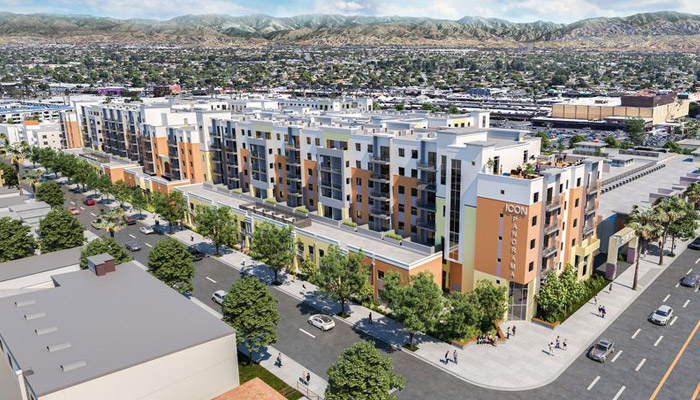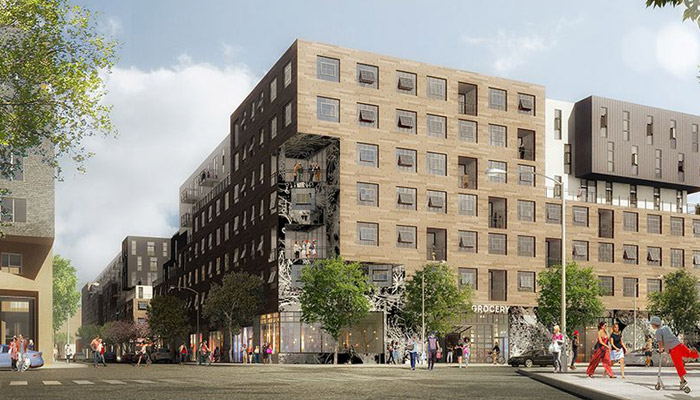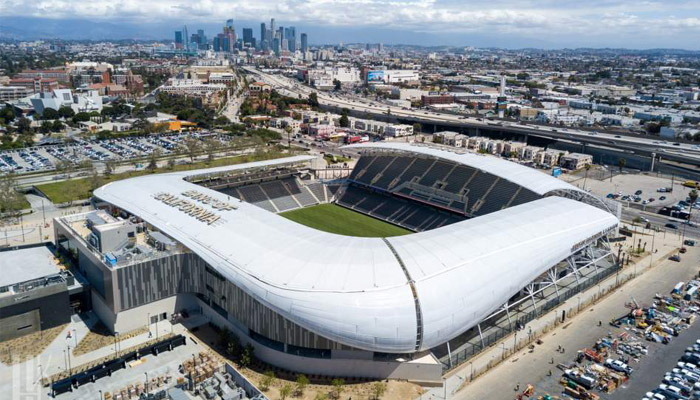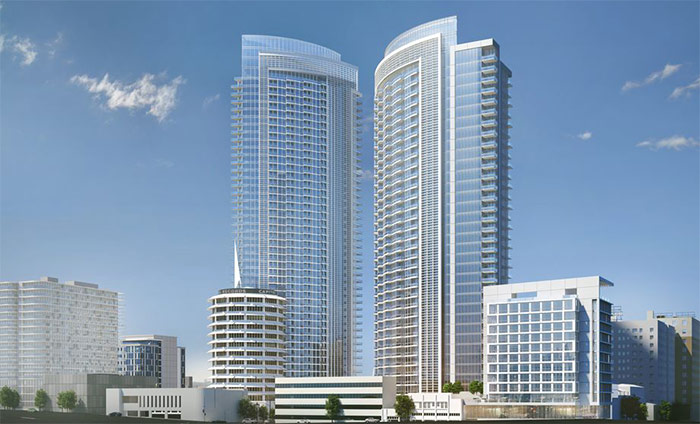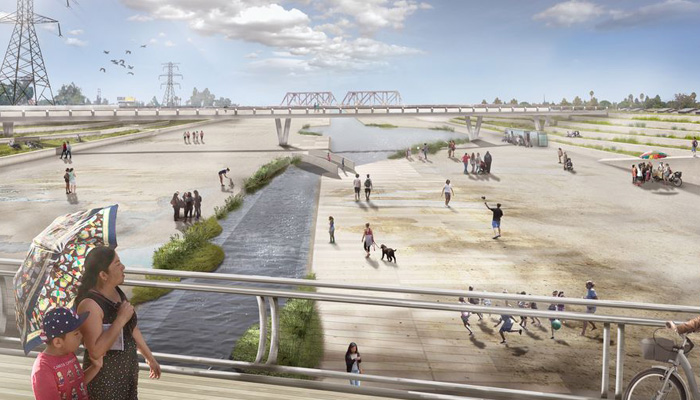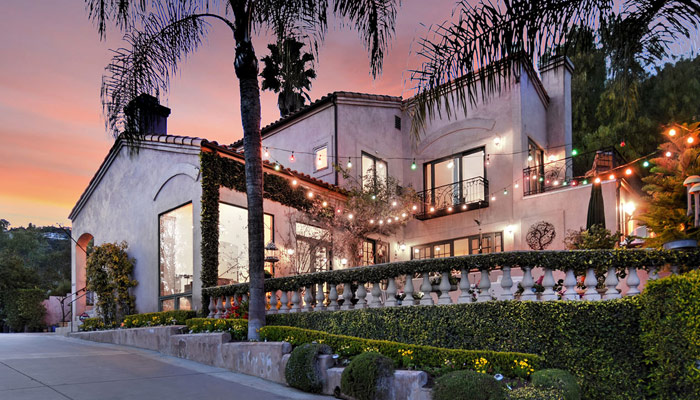Commission backs major redevelopment of Panorama City’s old Montgomery Ward
The proposed redevelopment of Panorama City’s long-dormant Montgomery Ward is charging forward with the backing of the Los Angeles city planning commission.
On Thursday, commissioners heaped favorable reviews on the project, dubbed ICON at Panorama, voting unanimously to endorse plans for 623 apartments, 60,000 square feet of shops and restaurants, and a landscaped plaza at the old Montgomery Ward site.
“I’m really pleased to see some dollars ...
Big Arts District live/work development could start construction next year
AvalonBay Communities is taking a big step forward on its plans to build a 475-unit mixed-use development with a grocery store and commercial and space.
Today, the city planning department published the Arts District project’s final environmental report, a significant hurdle on the path to getting the project built.
Located at 668 South Alameda and designed by R&A Architecture, the development would rise up to seven stories and hold 475 live/work ...
LA’s new soccer stadium is now open
The much-awaited soccer stadium in Exposition Park opens today near USC.
A ribbon-cutting ceremony marks the first time the stadium gates have opened to the public. Today is also the first time that the stadium’s home team—the Major League Soccer franchise the Los Angeles Football Club—trained in the space. The team will play its first game in the stadium later this month.
In addition to a soccer field, the $350 million venue holds shops, ...
Millennium Hollywood project returns with new name and affordable senior housing
The beleaguered Millennium Hollywood project has returned.
Developer MP Los Angeles announced today that it has filed new plans with the city for the project, now dubbed Hollywood Center. It would feature 1,005 apartments and condos, including 133 units set aside for low-income seniors.
The housing would be spread across two towers—one with 35 stories and the other with 46—and two 11-story structures on lots next to and across from the Capitol ...
Angelenos might have an earthquake early warning app by the end of 2018
There’s a 93 percent chance that, in the next 30 years, an earthquake as big—or bigger—as the deadly Northridge quake will strike Los Angeles again.
Those odds pushed the city of Los Angeles to pioneer the development of an earthquake early warning system that would give Angelenos up to a minute’s warning before a quake.
Beta-testers of the app have been able to experience how well the technology works over the last few months. Today, when ...
First look at the OMA addition to Wilshire Boulevard Temple
The Wilshire Boulevard Temple announced today that it submitted plans to the city for a new building to complement its historic 1929 temple.
The new event space—designed by Rem Koolhaas’s firm OMA—“will offer an irresistible invitation to gather, celebrate, learn, and reach out to others ... in the city’s most diverse neighborhood,” says rabbi Steve Leder.
First announced in 2015, the new building will sit just east of the existing temple ...
Renderings show the dramatic makeover that could be in store for the lower LA River
A wide array of projects big and small are now moving forward alongside all 51 miles of the Los Angeles River, and some of the most comprehensive planning is taking place along the river’s southern portion, from Vernon to Long Beach.
Last year the Lower Los Angeles River Working Group released a draft plan for the revitalization of the river’s final 19-mile stretch. New renderings, released last week by architecture firm Perkins + Will, offer ...
Kofi Nartey Discusses How He Sells Million Dollar Homes to High Net Worth and Celeb Clients
Kofi Nartey has over fourteen years of professional experience in luxury real estate and has sold millions of dollars worth of real estate. The former athlete and actor is currently the Celebrity and Luxury Homes Specialist and the National Director of the Compass Sports & Entertainment Division. We caught up with Kofi to find out more about how he has managed and trained hundreds of agents, and built a successful real estate business.
SB: ...
75 percent of LA residents can’t afford to buy in LA
Home prices in Los Angeles are quickly getting out of reach for many residents, according to a new report from the California Association of Realtors. It finds that just one in four residents of LA County make enough to afford a median-priced home in the area.
The association’s Housing Affordability Index shows that a typical LA County home cost $553,330 in the fourth quarter of 2017. With property taxes and insurance factored in, that comes out ...
Kofi Nartey named one of Variety’s 2018 Showbiz Real Estate Elite
Variety’s annual Showbiz Real Estate Elite are the entertainment industry’s go-to agents, not just in Hollywood, but also on the East Coast, in Miami and even in Europe, Latin America and Asia. Their clients come from all over the globe. Not surprisingly, however, these high-flying negotiators mostly work the properties in the Beverly Hills and Bel-Air hot zone.
The Nartey Group's Kofi Nartey was included in the 2018 edition of the list. "[Kofi's] ...
